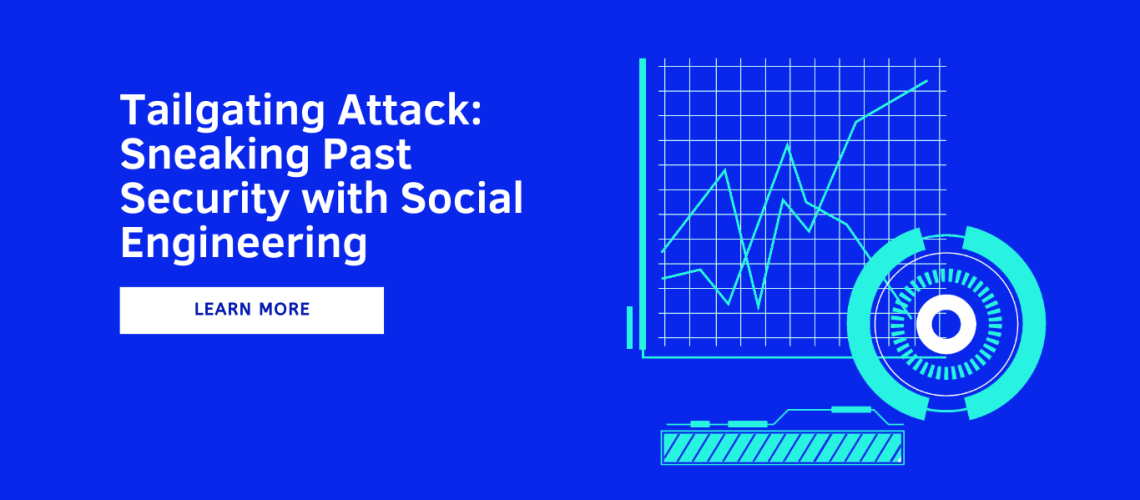In the world of cybersecurity, there are countless threats and attack vectors that organizations and individuals must guard against. One often underestimated but highly effective method is the tailgating attack. Unlike the sophisticated, technically complex breaches that dominate headlines, tailgating relies on a much simpler yet equally potent weapon: social engineering.
This blog will explore what tailgating attacks are, how they work, and what individuals and organizations can do to protect themselves from this subtle but dangerous threat.
What is a Tailgating Attack?
Tailgating, in the context of security, is the act of an unauthorized person following an authorized person into a secured area or facility. Think of it as a breach that occurs not due to technical vulnerabilities, but rather a lack of human vigilance. The attacker leverages social engineering tactics to gain physical access to an otherwise secure location.
How Tailgating Works?
A tailgating attack usually unfolds in the following way:
- The Approach: The attacker identifies a legitimate entrant to a secure area, such as an office building or data center, and positions themselves nearby.
- The Pretext: The attacker often employs a pretext to approach the target. This might involve carrying a box that appears too heavy to open a door, faking a phone call, or pretending to be a fellow employee who’s forgotten their access card.
- The Request: The attacker asks the legitimate entrant for assistance, typically requesting they hold the door open or swipe their access card to let them in. In most cases, the authorized person complies out of politeness or a desire to help.
- Infiltration: Once inside, the attacker gains unauthorized access to the secure area. This can lead to theft, data breaches, or the installation of malicious devices.
Why Tailgating is So Effective?
Tailgating attacks succeed for several reasons:
- Social Engineering: Tailgating exploits human psychology. People are naturally inclined to help or be courteous, and attackers use this to their advantage.
- Lack of Awareness: In busy environments, employees may not always be vigilant about who is entering the premises. They might assume that others have legitimate reasons to be there.
- Over-reliance on Technology: Organizations that rely solely on access cards or electronic systems may neglect to enforce the importance of visual verification, making it easier for attackers to slip through the cracks.
Who is Vulnerable to Tailgating Attacks?
Any organization or individual with physical access controls can be vulnerable to tailgating attacks. However, certain sectors and roles are more susceptible:
- Corporate Offices: Office buildings with multiple entry points are a prime target. Employees, contractors, and visitors coming and going can make it difficult to verify everyone’s identity.
- Data Centers: Data centers house sensitive and valuable information. Tailgating can lead to physical server breaches, which can have catastrophic consequences.
- Healthcare Facilities: Hospitals and medical centers often have a constant flow of staff, patients, and visitors. The urgency of healthcare can lead to less scrutiny at entry points.
- Education Institutions: Schools and universities may have multiple entrances and a constant stream of students, faculty, and visitors, making it easier for an attacker to blend in.
Also Read: What Type of Social Engineering Targets Particular Groups of People?
Preventing Tailgating Attacks
Preventing tailgating attacks requires a combination of technology, policies, and employee awareness. Here are some essential steps to enhance your security posture:
- Access Control Systems: Invest in robust access control systems that require both a card or PIN and visual verification. These systems can flag unauthorized access attempts.
- Security Training: Educate employees about the risks of tailgating attacks and provide clear guidelines on challenging individuals who appear suspicious. Encourage a culture of security awareness.
- Physical Barriers: Implement physical barriers like turnstiles, mantraps, or revolving doors that make it difficult for unauthorized individuals to follow authorized personnel.
- Security Guards: Employ security personnel who are trained to recognize and respond to tailgating attempts.
- Visitor Policies: Establish clear visitor policies, requiring all guests to sign in and wear visible identification. Escort visitors while they are in secure areas.
- Alarm Systems: Integrate alarm systems that trigger an alert when multiple individuals enter with a single access card within a short timeframe.
- CCTV Cameras: Install surveillance cameras near access points to monitor and record entries and exits.
- Regular Audits: Conduct regular security audits and review camera footage to identify potential breaches.
Real-Life Examples of Tailgating Attacks
Tailgating attacks are not just theoretical; they happen in the real world with serious consequences. Here are a couple of notable examples:
- The Case of T-Mobile: In 2010, a former employee at T-Mobile’s data center in the U.K. used his knowledge of the facility’s layout and social engineering skills to gain access. He managed to infiltrate the data center multiple times and steal computer equipment, including hard drives containing sensitive customer data.
- The St. Louis Incident: A security expert named Brian Brushwood conducted a social experiment where he used the tailgating technique to gain access to various secure locations, including banks, hospitals, and offices. The experiment revealed how easily he could enter these facilities just by asking people to hold the door open.
These examples demonstrate how vulnerable organizations can be to tailgating attacks and highlight the importance of robust security measures.
Conclusion
Tailgating attacks are a clear reminder that the most sophisticated security systems can be defeated by human error and social engineering. The key to preventing tailgating is a combination of technology, policies, and education. In an era where cybersecurity is a top priority, it’s essential not to neglect physical security, as breaches can happen not only through the digital realm but through the front door as well. Stay vigilant, educate your staff, and invest in the necessary security infrastructure to keep your organization safe from these subtle yet insidious attacks.



